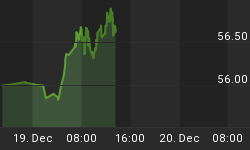You know there is actually nothing wrong with the generic financial indicators you find within every stock charting package, I am referring to the RSI, MACD and Stochastic. But what is at fault is the settings one uses with these indicators, the market changes its rhythm, its swing or more bluntly its cycle. General folk do not know how to reset these indicators because they dont have the means, and this is why most folk dont even change the default [RSI(14), MACD(26,6,6) and Stochastic(14)].
To find settings that are statistically significant for the market in question you need to apply a Bartels scanner (we call ours the RTT Cycle Finder Spectrum), this type of scan loops through a price time series to find settings that fit the market. Once these settings are found you can apply them. Of course as time goes on you must re check the settings with new market data to ensure that the settings maintain their significance. Your trading advantage is of course that you have found the market rhythm and therefore you can predict the next swing up or down. This is of course cycle theory at work, no matter if the time frame is a few days to weeks or months finding the statistically significant period that represents the inner market rhythm will always give you an edge over those that dont.
NOTE: There is another step between finding the significant market cycle period and execution in the market and that is price action confirmation supports your view.
Our site has many example of cycle theory over the longer periods, thus the need for an example for cycle period over the shorter time frame.
Lets review the ETF for the NASDAQ 100 known as the QQQ.
As we are after short term cycles, we there wish to look at small recent data set. 90 days should do.
Here is the output from the Bartels Scanner or our RTT Cycle Finder Spectrum
As you can see the period that is statistically significant is 22. We may try 19 and 20 as well. Below we load 22 period into our cycle tool called RTTHurstROC and review.
As you can see the above chart generates great entry points for leverage securities (options, futures, forex). Of course the art of the trade is not just the entry, it is also the exit, but you would agree a great entry makes the exit a little easier. After a couple of weeks re scanning is required to ensure that the 22 period maintains its significance. For short term speculation scan for cycle periods between 10 and 40 using a data set size of 60 to 150, or as you see fit.
Knowing that the 22 cycle period is significant for the QQQs, it may also be significant for stocks within the NASDAQ100, our RTT Cycle Finder Spectrum has scanning functionality for you to find these highly correlated cycle stocks.

















